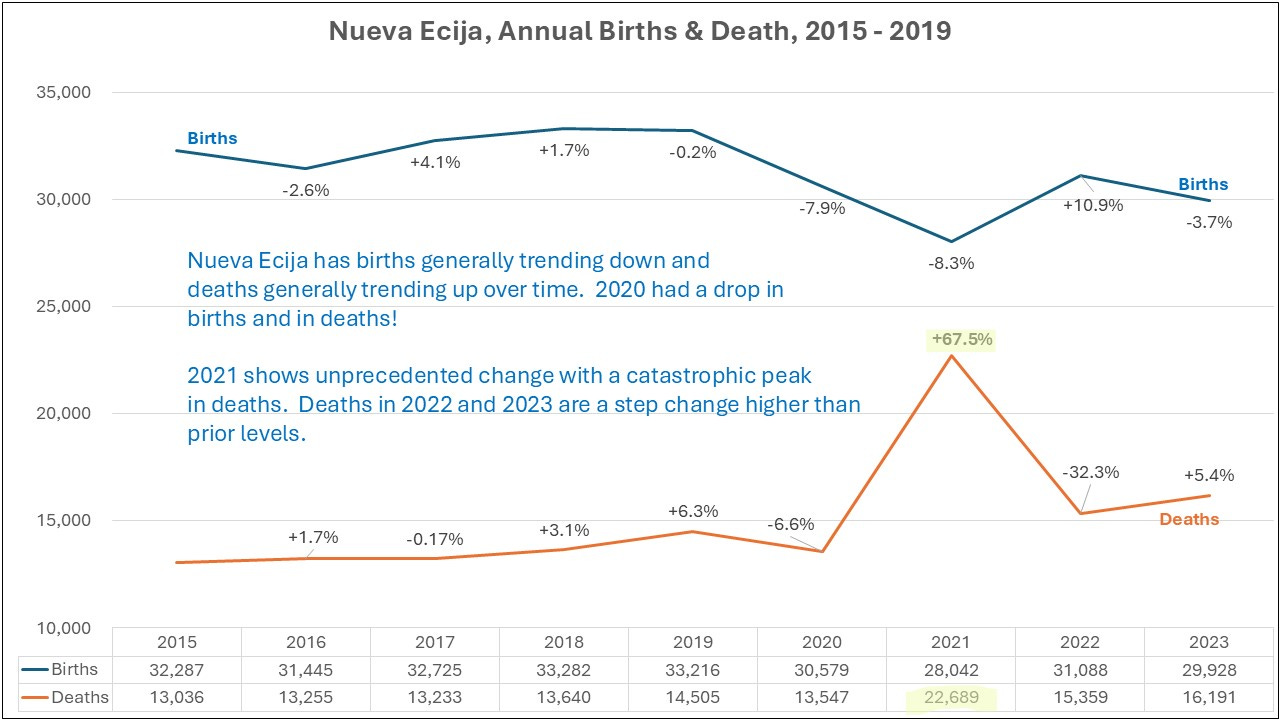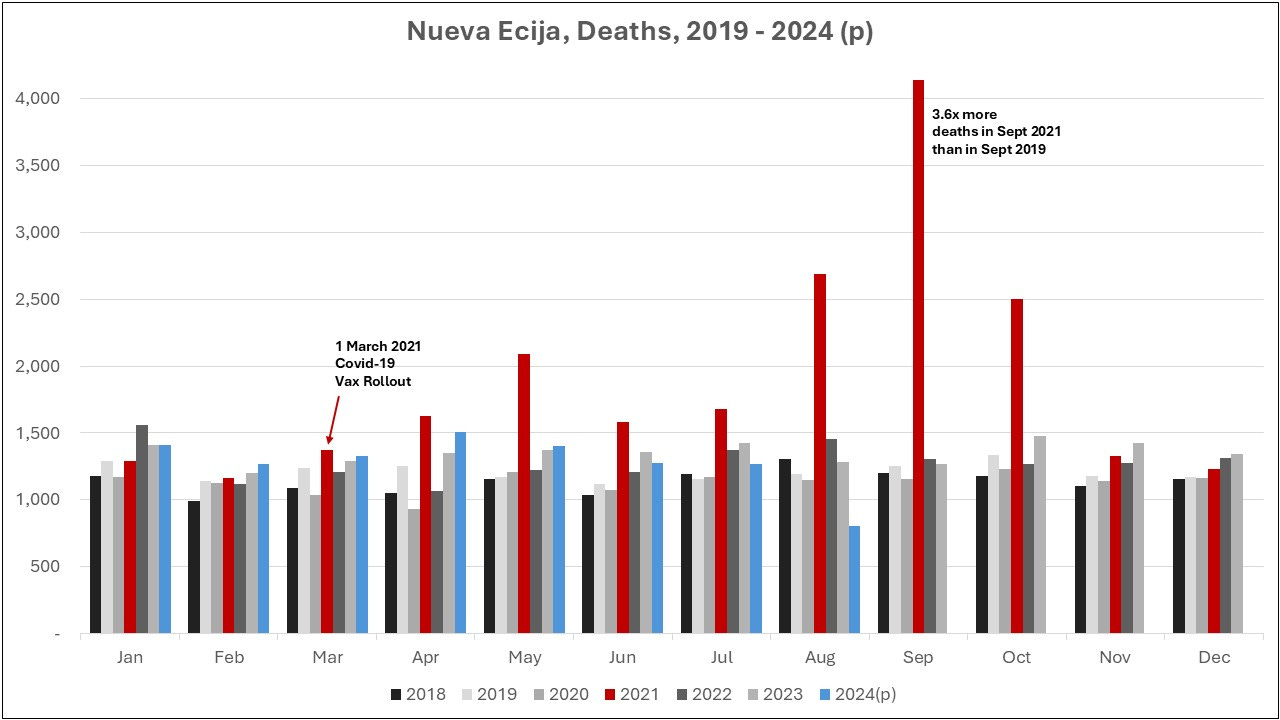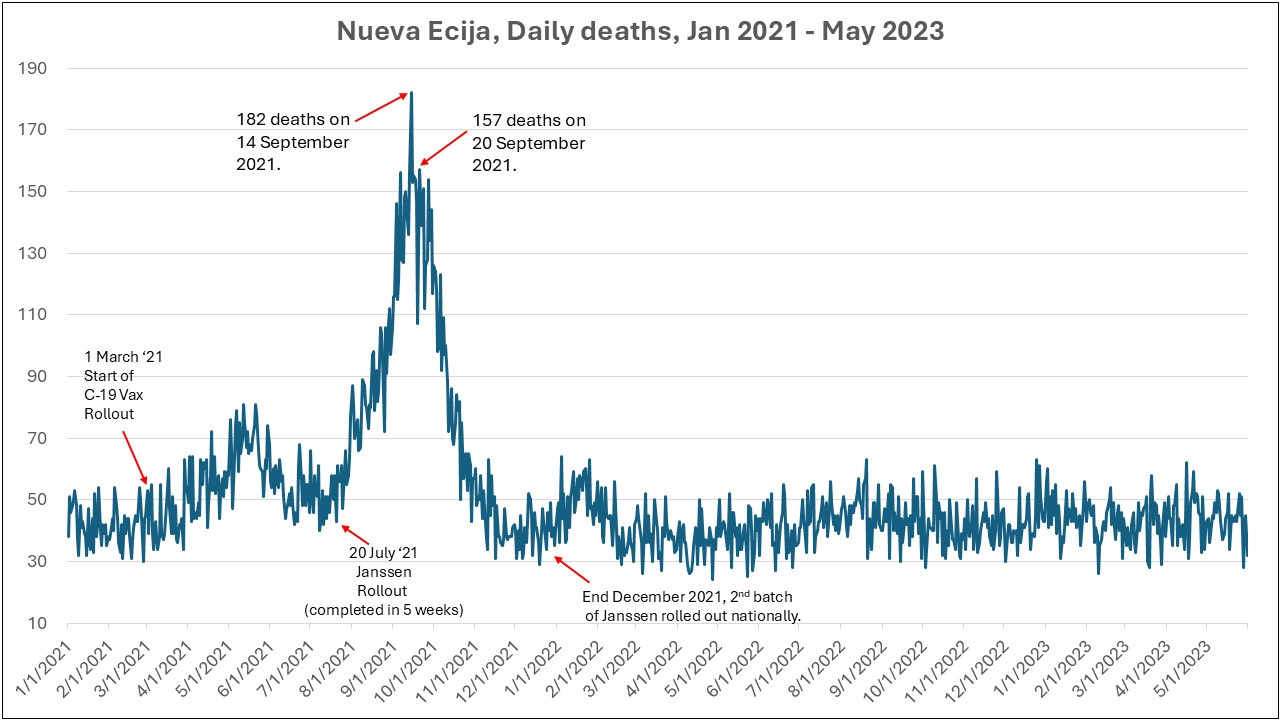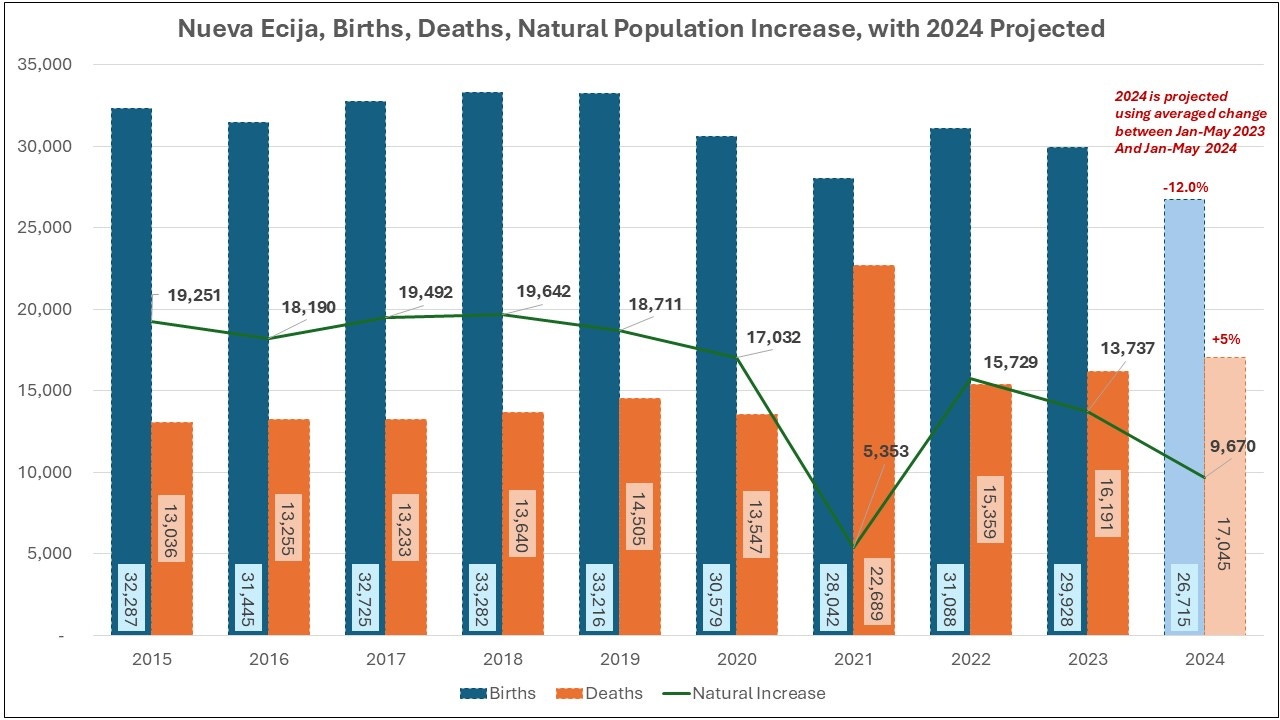Nueva Ecija, Central Luzon, Philippines had one of the Worst Population Outcomes in 2021 Following Rollout of Covid-19 Vaccines with 67.5% Excess Deaths.
Births in 2024 look to be plummeting, while deaths are still rising. How can this data not be evidence of a crime against Filipinos, and abject neglect to address the unfolding population collapse?
After my last stack presenting vital statistics for Bulacan Province, I wanted to see which region in the Philippines had the worst deaths in 2021. One of the worst is Nueva Ecija, which neighbors Bulacan. Nueva Ecija is a province in Central Luzon, north of Metro Manila. Its population was estimated at 2.31 million in 2020 and its main produce is agriculture. It is known as the rice basket of the Philippines.
From 2016 to 2019, Nueva Ecija had rising births, bucking the overall national trend of falling births. This reversed in 2020 and 2021, possibly at least in part related to failure of parents to register their children’s birth under lockdown conditions, and rose in 2022 to show partial recovery once lockdowns were lifted; assuming that normal registration procedures had resumed? Births fell in 2023, likely representing a true fall, and it looks like births will plummet in 2024.
While deaths have been generally increasing over time, they fell considerably in 2020, the first pandemic year. Seems there were no significant health issues in Nueva Ecija in 2020 and no sign of an actual pandemic killing people that year.
Deaths showed an unusual and catastrophic spike in 2021, which had 67.5% excess deaths, the highest of any province. Actual deaths may be higher than reported: the Philippines Statistics Office stopped compiling late registrations by March of 2022, instead of continuing late registration compilation until August 2022 (in all other years late registrations continue for at least 9 months after the close of year).
Births in 2021 should be better than the data shows; but the deaths could be far worse.
Monthly vital statistics data are shown across time from 2019 through to mid-2024. Deaths jumped and births started falling at an accelerated rate from March 2021, immediately coincidental with the rollout of Covid-19 vaccines.
Deaths post-2021 are a step level higher than pre-pandemic levels and appear to be rising over time. 2024 data is preliminary. Deaths did not show any recovery or dip after the 2021 excess; no evidence of a pull-forward effect where the fact of people dying prematurely should have meant compensatory fewer deaths in following months / years): it appears that the population has become newly susceptible to higher than usual deaths.
Deaths in September 2021 were more than 3x higher than usual levels, and far in excess of births in that month. While deaths did drop again there was no compensation (pull forward effect), deaths remain above pre-pandemic levels, and they are rising over time.
2024 data is concerning as deaths are running above 2023 levels in most of the first months of the year; Jan-May are on average 5% above levels for the same period in 2023. Registered deaths will rise further as late registrations are compiled.
When comparing by month, the spikes in 2021 become abundantly clear. How can this have been from natural causes, when Covid-19 didn’t cause any excesses in 2020?
Data on deaths by day of death is also revealing. Deaths went up with the start of the Covid-19 vaccine rollouts (I don’t know the exact date that rollout started in Nueva Ecija - may have been a few days later than in Metro Manila). Deaths then soared in the 3rd quarter of 2021.
There was peak of 182 deaths on 14th September 2021, 25 deaths higher than the next highest death day. September 14 was a Tuesday; was there a rollout specifically to certain vulnerable populations on September 13? Something actively killed residents specifically that week. If any of my readers are from that area and still have information on rollouts, please do share in the comments section below.
I find the recent developing birth data to be more worrying than the still rising death data. Monthly births in the second half of 2023 follow a similar pattern to prior years, though slightly lower than 2022 levels. However, in the first months of 2024, births are on average 12% lower than 2023 levels; while births may improve with the addition of late registrations they will likely still remain well below 2023 levels.
If preliminary 2024 data from Jan-May holds for the rest of the year, Nueva Ecija will see a 5% increase in deaths and a 12% drop in births in 2024 compared to 2023.
Overall, since 2019, if realized in final 2024 data, there could be in the range of a 17.5% increase in deaths and a 19.6% decrease in births in Nueva Ecija; a 48.3% drop in annual population increase in just 5 years.
Nueva Ecija is an agricultural province. It needs its people! Is anyone listening?










You said it, Nueva Ecija is an agricultural province. Likely why they targeted it the most... (perhaps the deadliest of the experimental bioweapon vials were shipped there). Why so? Look to the West and how the vile, evil cabal has been targeting the agricultural products and lands in its bloody, subhuman depopulation scheme.
Oh, my heart! Too distressing! Thank you for your tireless work on this, Sally.